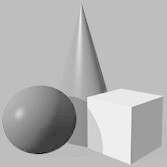
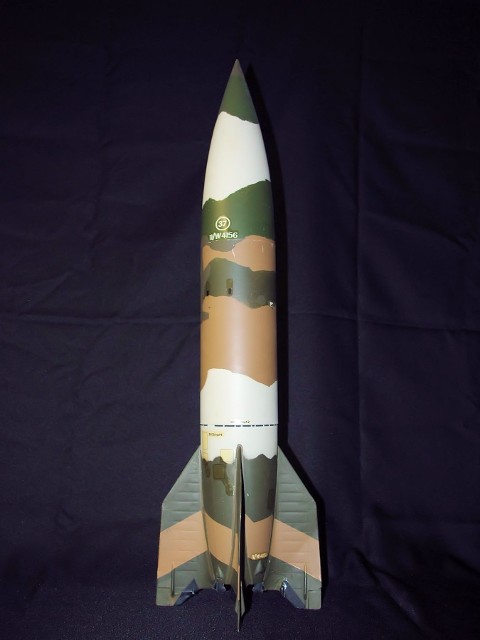
An original Estes "Maxi Brute" German V-2 Rocket, 1/19 scale. Original release - 1974. The bird used a single "D" engine and two 24" parachutes: one for the booster and one for the nose cone. The German V-2 was the work of the VonBraun team and was the first successful IRBM used in warfare.
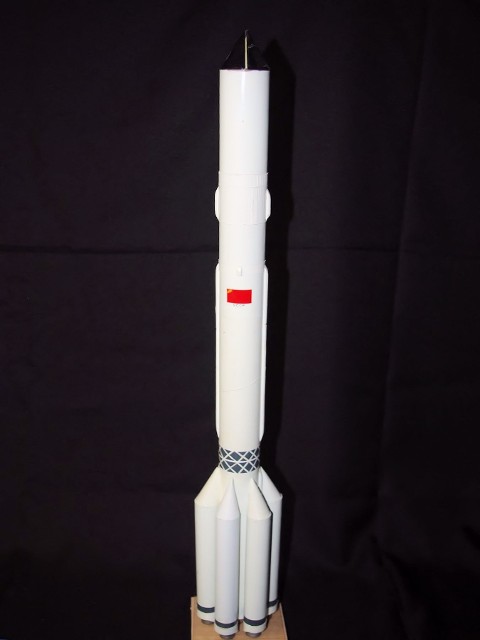
Scratch-built Russian Proton Booster. Built in 1984. Designed to fly on single "C" engine power withe a single 24" parachute.
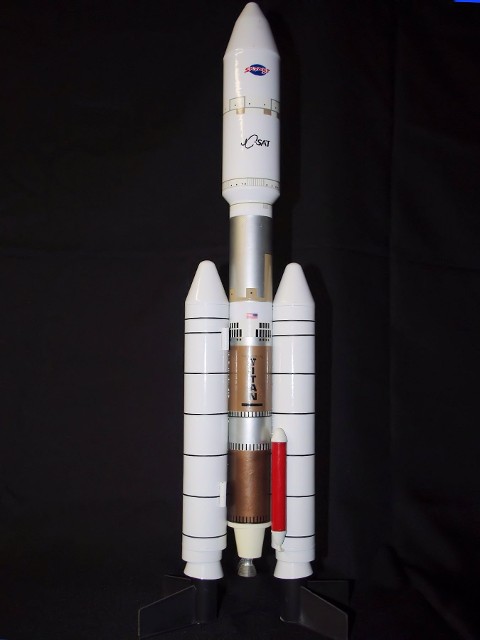
Estes Titan IIIE, in 1/73 scale. Original release - 1989. Hand-painted fairing emblems for two satellite owners: Skynet and JC Sat, as the Titan could loft two Hughes 360 Series telecom satellites at the same time.
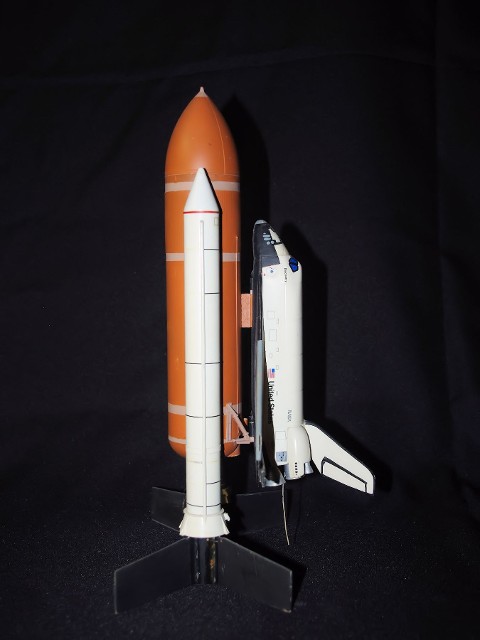
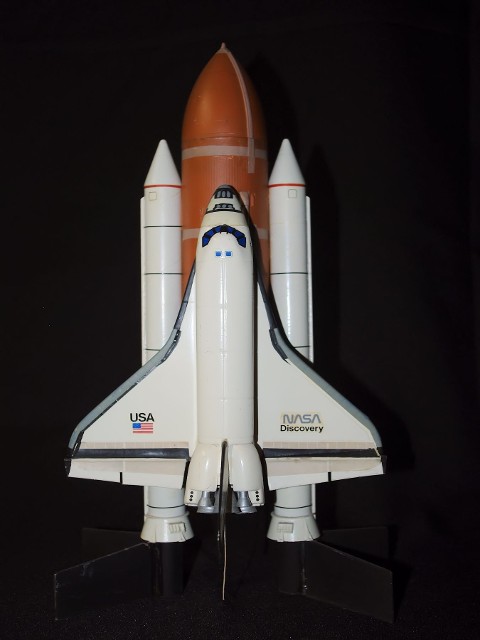
An original Estes Space Shuttle, in approx. 1/162 scale. Original release - 1977 - four years before STS-1 flew! The bird flies with only the C6-3 engine. At apogee, the Orbiter separates from the SRB-ET section, which glides back to a landing while the booster section returns by 18" parachute. At one time, I owned three of these. One badged as "Columbia" with a white ET, and two badged as "Challenger" and "Discovery" as each new Orbiter came "on-line."
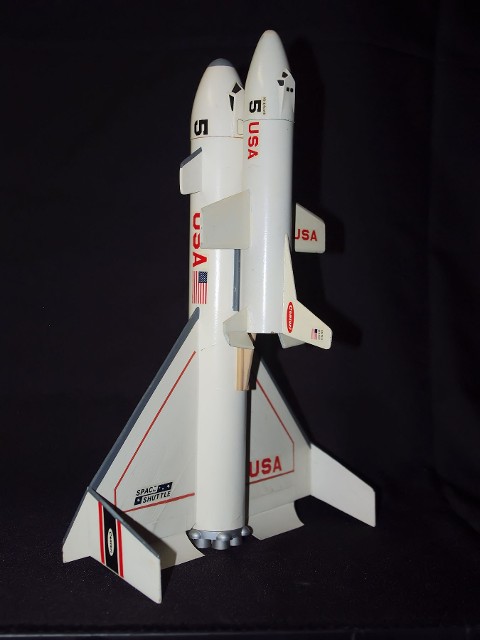
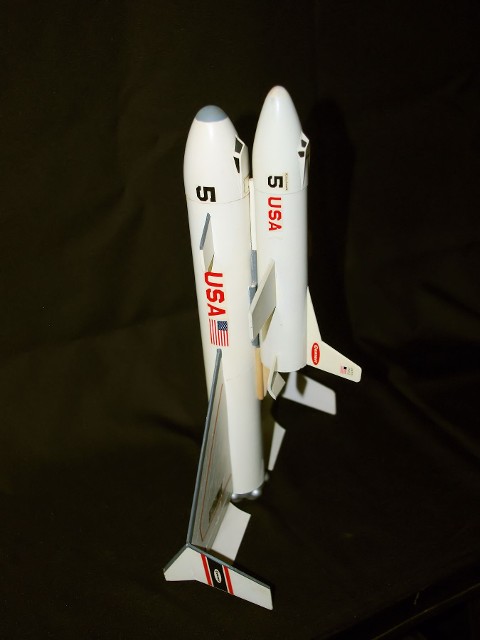
An original Centuri Space Shuttle. Original release - 1975. The model depicts and actually flies the way the original NASA Space Shuttle was supposed to - both the booster section and the Orbiter return as gliders - a fully reusable vehicle. The engine pod ejected itself from the Orbiter's tail at apogee.
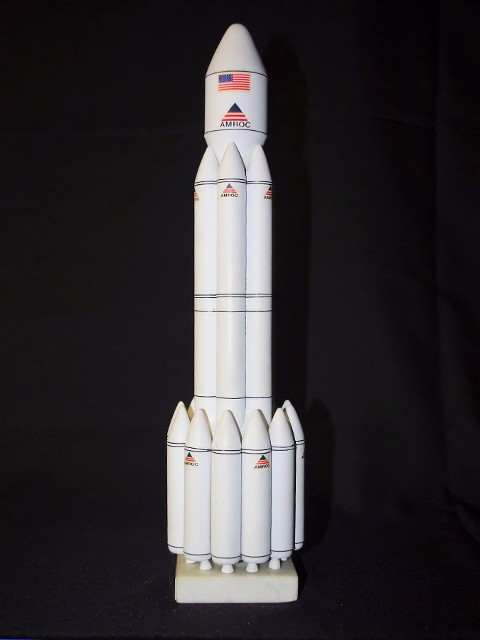
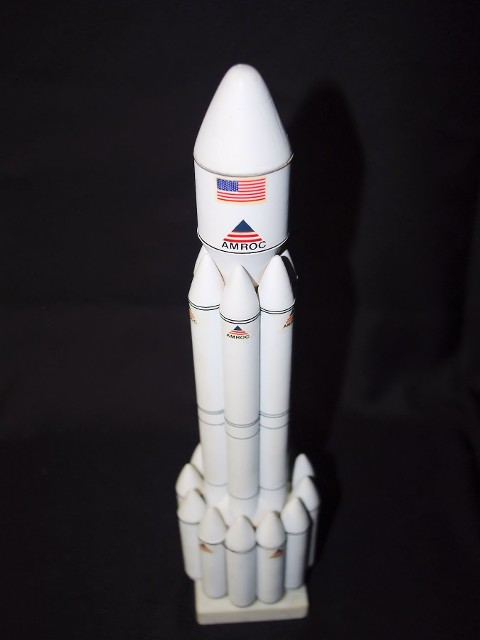
A scratch-built model of the American Rocket Company (AMROC) concept for their "Conestoga 2" modular hybrid commercial launch vehicle. AMROC went bankrupt before this bird ever flew. The model was based on drawings published in Aviation Week in 1988.
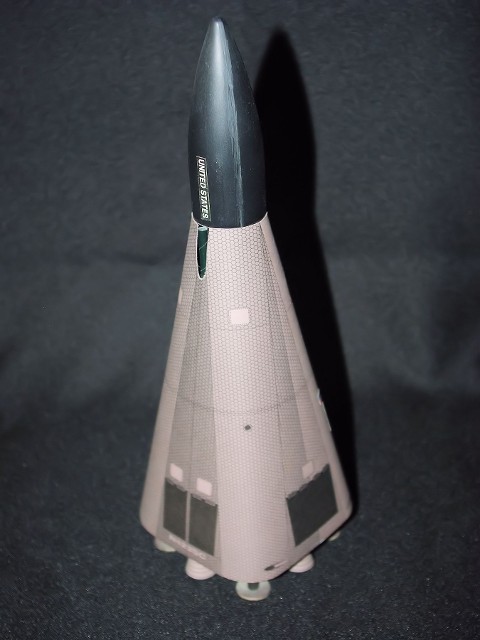
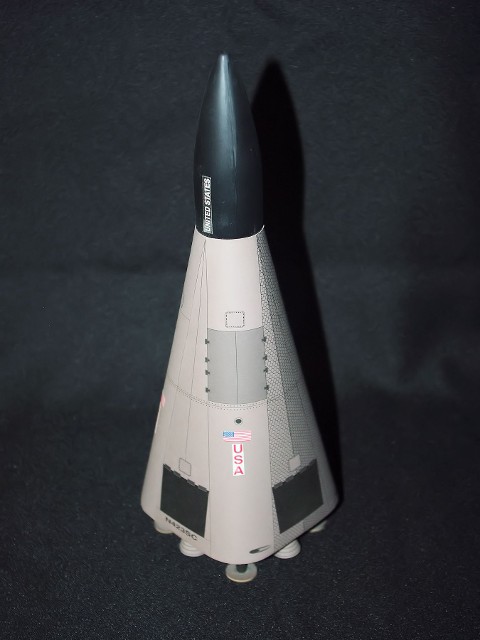
Centuri Industries' flying model of the McDonnell-Douglas "Delta Clipper" (DCX), which was the first prototype single-stage to orbit vehicle. The DCX made a number of successful test flights at Edwards Air Force Base, proving its ability to do vertical thrust-assisted landings, however, it never made it anywhere near orbit.
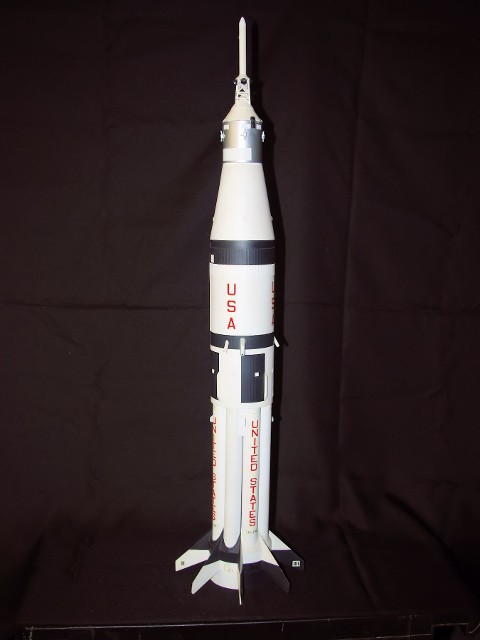
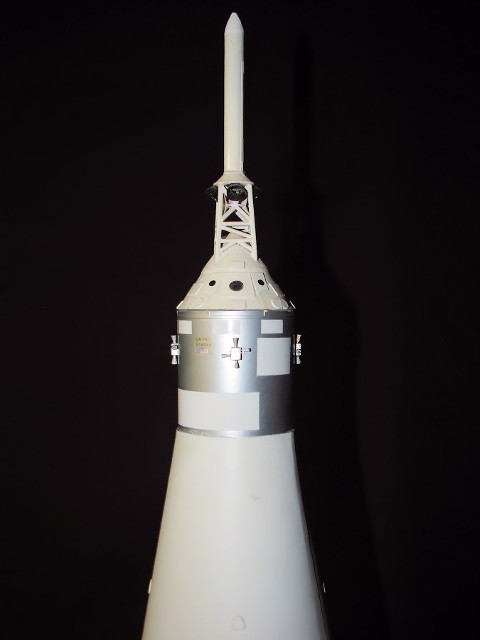
An original Estes Saturn 1B in 1/70 scale. Original release - 1967. This is the second incarnation of this model I have built. The first was flown, damaged, repaired, and lost in flight after years of flight service. The model shown was built in 1980 and detailed for the flight of Apollo-Soyuz, the last flight of Apollo-Saturn. The model rocket flew with a four-engine cluster of B or C series engines.
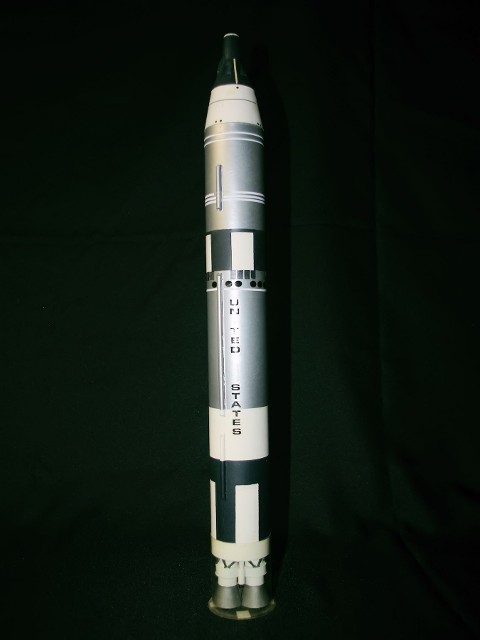
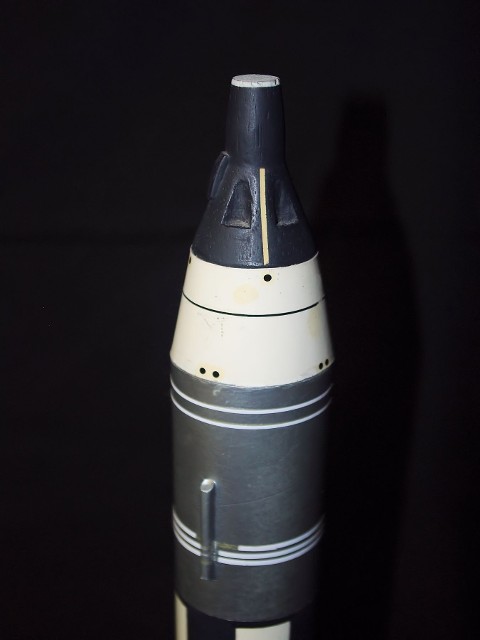
An original Estes Gemini-Titan II. Original release - 1966. The model is approx. 1/54 semi-scale and was the largest model of the Gemini-Titan available. The bird flew with a two-engine cluster of B or C series engines.

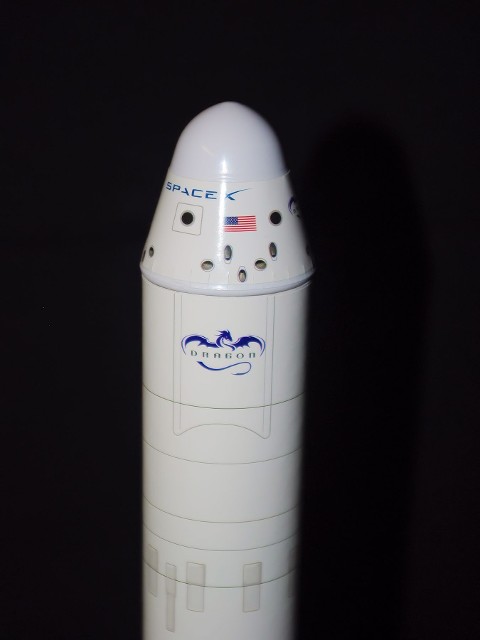
Originally released in 2010, the 1/88 scale model of the SpaceX Falcon 9 Commercial Rocket Booster model is now sold by SpaceX itself, but was originally available through Amazon.com. Now, SpaceX operates its own web store on its own website.
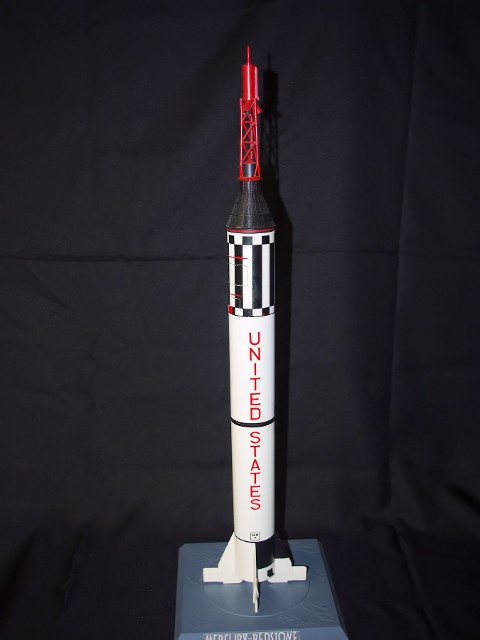
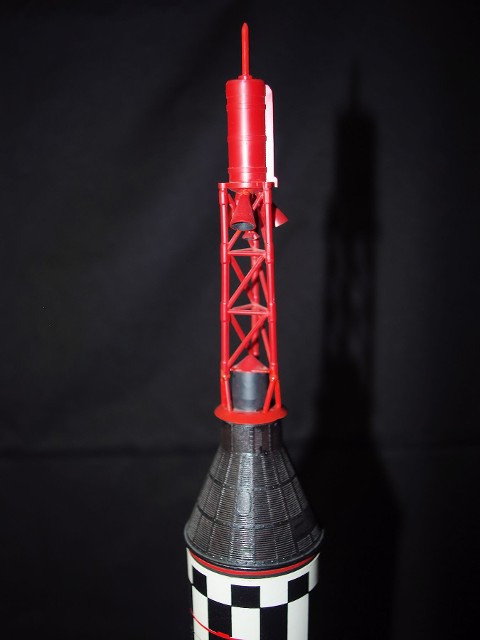
An original Estes Mercury Redstone Rocket in 1/42 scale. Original release - 1968. The single-engine model is badged for the flight of Freedom 7 (MR7), which made Alan Shepard America's first astronaut in a suborbital flight on May 5, 1961.
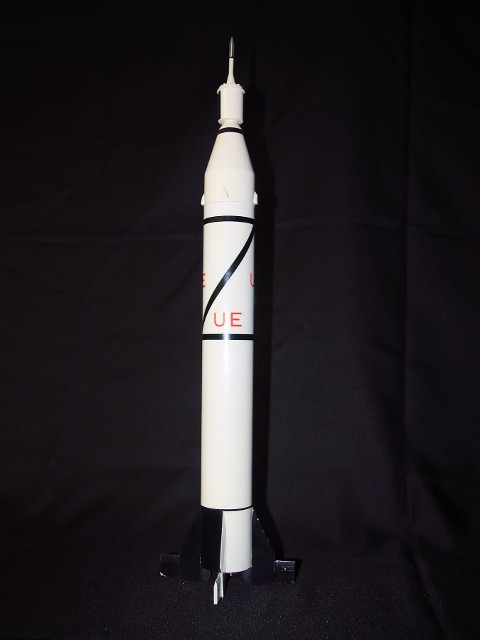
The Estes model of the Jupiter C rocket which placed Explorer 1 into orbit, marking America's first Earth-orbiting satellite. The model is in the same scale as its cousin, the Mercury Redstone -1/42 scale. Original release date - 1987.
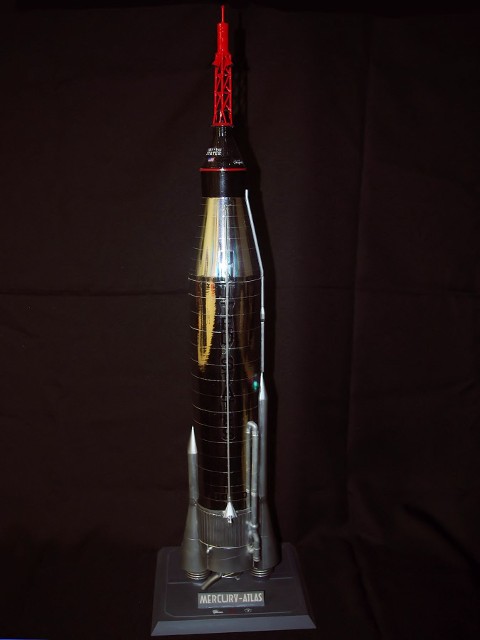
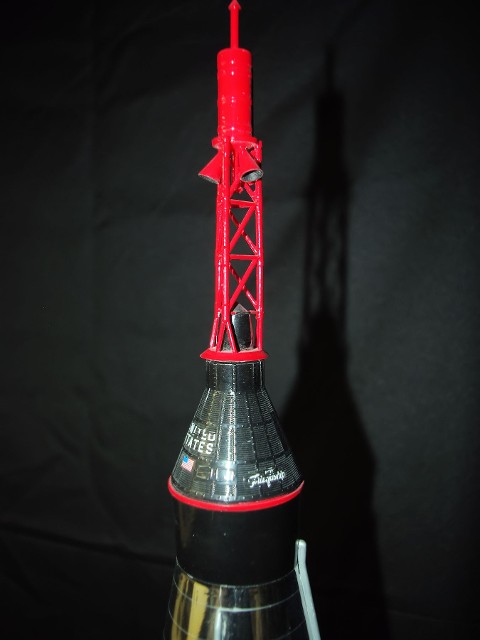
The Estes Mercury Atlas in 1/42 scale, the same scale as the Mercury Redstone and the Jupiter C. Original release date - 1995. The use of aluminum coated self-adhesive panels for the Atlas booster made this one of the most realistic-looking models ever made of the booster, as Atlas' skin was thin stainless steel. The model is badged for the flight of MA-6, "Friendship 7" which took John Glenn into orbit for the first time in the American Space Program on February 20, 1962.